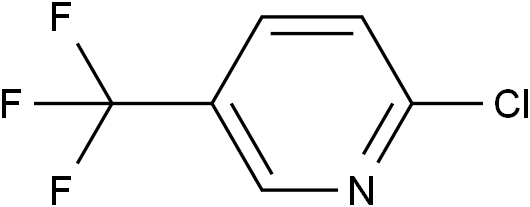2-Chloro-5-(Trifluoromethyl)Pyridine (CTF) is an organic compound that plays a crucial role in various chemical and pharmaceutical applications. This versatile molecule is commonly used in the synthesis of agrochemicals and pharmaceuticals due to its unique chemical structure. In this article, we will explore its chemical properties, synthesis methods, and key applications.
Chemical Structure and Properties of CTF
CTF features a pyridine ring with a chlorine atom at position 2 and a trifluoromethyl group at position 5. This specific arrangement provides CTF with distinct chemical characteristics, such as increased electron density and stability, making it highly reactive in several chemical processes. The trifluoromethyl group enhances its lipophilicity, allowing it to interact effectively with other organic molecules.
The chemical structure of CTF contributes significantly to its solubility in various solvents, including polar solvents. Moreover, its stability under different conditions makes it ideal for use in a wide range of synthetic reactions.

Synthesis Methods of 2-Chloro-5-(Trifluoromethyl)Pyridine
There are several methods to synthesize CTF, with the most common being nucleophilic substitution reactions. One popular route involves reacting 2-chloro-5-bromopyridine with trifluoromethylating agents. This method is efficient and provides high yields of CTF, making it a preferred choice in industrial settings.
Another synthesis approach involves the use of transition metal catalysts to facilitate the formation of the trifluoromethyl group at position 5 of the pyridine ring. This method is particularly useful when high purity and selectivity are required.
Applications of 2-Chloro-5-(Trifluoromethyl)Pyridine
Agrochemical Industry
CTF is widely used in the agrochemical industry due to its ability to act as an intermediate in the synthesis of herbicides, insecticides, and fungicides. The trifluoromethyl group enhances the potency and stability of these chemicals, ensuring better performance in pest control applications.Pharmaceuticals
In the pharmaceutical industry, CTF is used to synthesize a variety of bioactive molecules, including those with antiviral, antibacterial, and anti-inflammatory properties. Its unique structure allows for the creation of compounds with enhanced efficacy and reduced side effects.Material Science
CTF is also employed in the development of new materials, particularly in organic electronics and polymers. Its stability and ability to interact with other functional groups make it an attractive building block for creating advanced materials used in displays, sensors, and other high-tech devices.
Conclusion
2-Chloro-5-(Trifluoromethyl)Pyridine (CTF) is a highly valuable compound due to its chemical structure and wide range of applications. Whether in agrochemicals, pharmaceuticals, or material science, CTF plays a vital role in the development of innovative solutions. With ongoing research and development, its potential continues to expand, making it a key player in modern chemical synthesis.
Chirality plays a critical role in drug efficacy and safety because enantiomers (mirror-image molecules) can have significantly different biological activities. Huimeng Bio-tech provides a variety of chiral compounds such as 2-Hydroxy-6-(trifluoromethyl)pyridine (HTF), 2-Fluoro-6-(trifluoromethyl)pyridine (FTF), Methyl(R)-2-(4-hydroxyphenoxy) propionate (MAQ) (CAS NO.: 96562-58-2), and 2,3-Dichloro-5-(trifluoromethyl)pyridine (DCTF). These compounds are vital intermediates used in the synthesis of drugs and agricultural chemicals.
Comments
Post a Comment